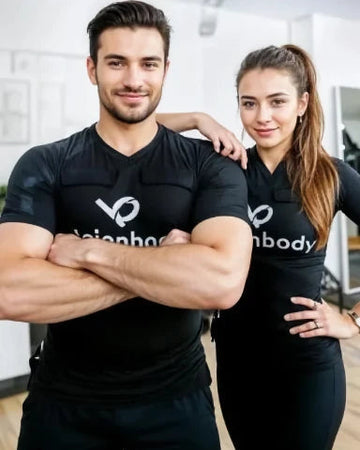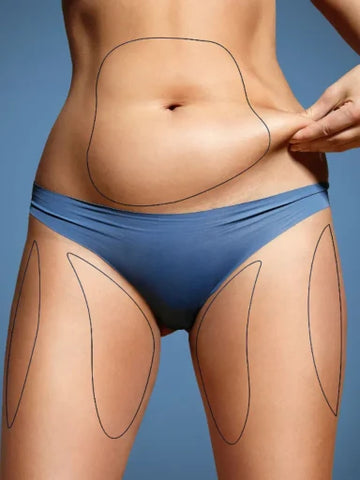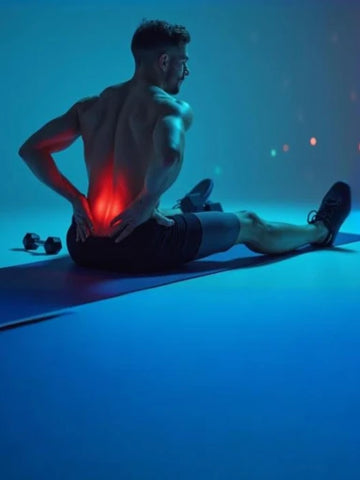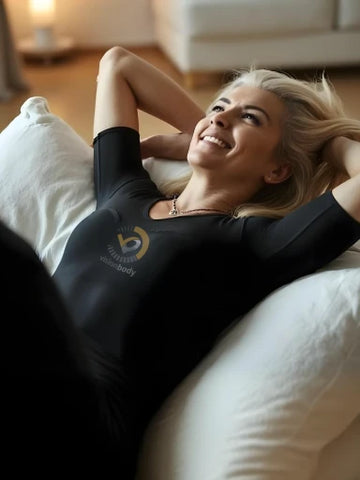By Henri Schmidt, Muscle Expert, CEO & Founder of Visionbody/VBTec
Disclaimer
Education only, not medical advice. If you’re in cancer treatment or recovery, always consult your healthcare team before starting any new exercise. Oxygen-friendly movement can support recovery, but only your care team can confirm what’s safe for you.
Why Rebounding Works, and Why It Pairs Perfectly with Visionbody
A mini-trampoline may look playful, but its vertical, rhythmic bounce creates gentle acceleration-deceleration forces that are often kinder to joints than jogging. Even short bouts can stimulate circulation, balance, and lymph flow, while leaving you surprisingly energized.
Now add the Visionbody HomeSystem: in just 20-25 minutes, you receive a full-body strength stimulus via EMS. No cables. No wetting. No complicated plan.
With Visionbody as your ‚’’ main event ’’, rebounding becomes the perfect light, oxygen-friendly add-on. It’s short, enjoyable, and sustainable.
Key Benefits of Rebounding
Compared to a brisk walk, rebounding provides some unique advantages:
✅ Multi-directional lymph movement through vertical oscillation (supports natural fluid flow)*
✅ Quick oxygenation boost in short sessions
✅ Mitochondrial activation via rhythmic aerobic work
✅ Helps the body’s natural clearance of metabolic by-products (through circulation and movement)
✅ Improved circulation with minimal joint strain
*Lymph support should be viewed as complementary movement, not as a medical treatment.

What the Research Says
- Study 1 (NASA, 1980s): Trampoline vs. treadmill training showed similar cardiovascular benefits with lower mechanical stress, indicating efficiency with less joint strain.
- Study 2 (Int. J. Sports Sci., 2018): Short rebounding sessions (~15 minutes) improved balance and aerobic markers in small groups. Promising, though larger studies are needed.
- Study 3 (Cancer & Lymphatic Research): Movement promotes lymph flow, which supports immune function. This does not mean rebounding treats cancer, only that it may be a supportive, clinician-approved activity.
How Visionbody + Rebounding Boost Energy and Motivation
One of the biggest challenges in fitness isn’t just finding the right training method; it’s staying consistent. That’s where combining Visionbody with rebounding stands out. Both approaches deliver quick, tangible results without requiring long hours or complicated routines, which helps keep motivation high.
Rebounding sparks an immediate sense of energy. The rhythmic bounce stimulates endorphin release, wakes up circulation, and provides a light aerobic boost, all in a matter of minutes. Visionbody adds the muscle-strengthening element in a time frame that feels achievable, even on busy days. Together, they create a system that rewards you with results while respecting your time and energy levels.
For people in recovery or returning to exercise, this combination offers a gentle entry point that doesn’t overwhelm the body. For active users, it’s an efficient “double hit” that builds both strength and aerobic capacity without risking overtraining.

Why This Matters in (and After) Cancer Care
Consistent, clinician-approved movement can improve:
- Cardiorespiratory fitness
- Mood and sleep quality
- Physical function
Gentle aerobic exercise increases oxygen uptake, which is beneficial for recovery, while Visionbody delivers an efficient strength dose. Simplicity matters: small, repeatable sessions are often more effective than complex plans.
A Simple Weekly Rhythm
- Mon/Wed/Fri → Visionbody EMS (20-25 minutes)
- Tue/Thu/Sat → Rebound (10-15 minutes) or a 5-minute “energy bounce” in the morning
- Sunday → Walk, breathe, recover
Starting fresh or post-treatment? Begin with just 3-5 minutes of low, gentle rebounding and one Visionbody session per week. Build gradually with your care team’s approval.
Sample 10-15 Minute Rebounding Session
- Warm-up (2 min): Soft knee bends, heel lifts on the mat
- Light bounce (6-10 min): Keep feet low, breathe through the nose
- Balance (1 min): side-to-side shifts or slow march holding a stable surface
- Cool-down (2 min): Slow the bounce, stand tall, breathe deeply
Why Visionbody Keeps It Simple
- One Suit, Whole Body workout: Visionbody EMS activates 98% of your muscles in just 20-25 minutes.
- Low Friction, High Consistency: The simple and ergonomic design of Visionbody suits allows you to skip tedious setup times, no wetting, no wires, take it with you in your suitcase when you travel, just suit up, and train.
- Stack Smart, Not Heavy: Pair EMS with light rebounding for oxygenation and lymph-friendly movement without draining energy.
Quick Comparison Table (10-15 Minutes, Easy to Moderate)

*Supportive movement, not a medical treatment.
Safety First
- Get clearance from your clinician, especially if you have bone fragility, bone metastases, balance issues, recent surgery, anemia, uncontrolled blood pressure, retinal conditions, DVT history, or are undergoing active treatment.
- Start short and easy; use a support bar if balance feels uncertain.
- Stop immediately if you feel dizziness, pain, palpitations, or unusual fatigue.
- Use a quality rebounder on level flooring with clear space around you.
Your Easy 1-2 Punch
- Morning: 5-10 minutes of gentle rebounding → wake up oxygen and energy.
- Evening (or alternate days): Visionbody HomeSystem (20-25 minutes) → full-body strength, no gym required.
Ready to simplify your fitness and recovery?
Get the Visionbody HomeSystem today and start your 20-minute strength routine at home.
New to rebounding? Reply “REBOUND” and we’ll send you our quick-start guide plus rebounder picks designed for small spaces.

I'm Henri Schmidt, Founder & CEO of VBTec/Visionbody. For over 35 years, I've worked in fitness and health, and I created the first wireless EMS system in 2014. Today, I continue to develop EMS technology to help athletes, professionals, and everyday people build muscle, stay healthy, recover faster, and enjoy lasting strength, energy, and vitality.
References
- NASA. (1980). Trampoline vs. treadmill biomechanical study. NASA Technical Reports.
- International Journal of Sports Science. (2018). Effects of short-term rebounding on aerobic capacity and balance.
- Lymphatic and cancer rehabilitation literature (various). Role of movement in lymph flow and immune support.
